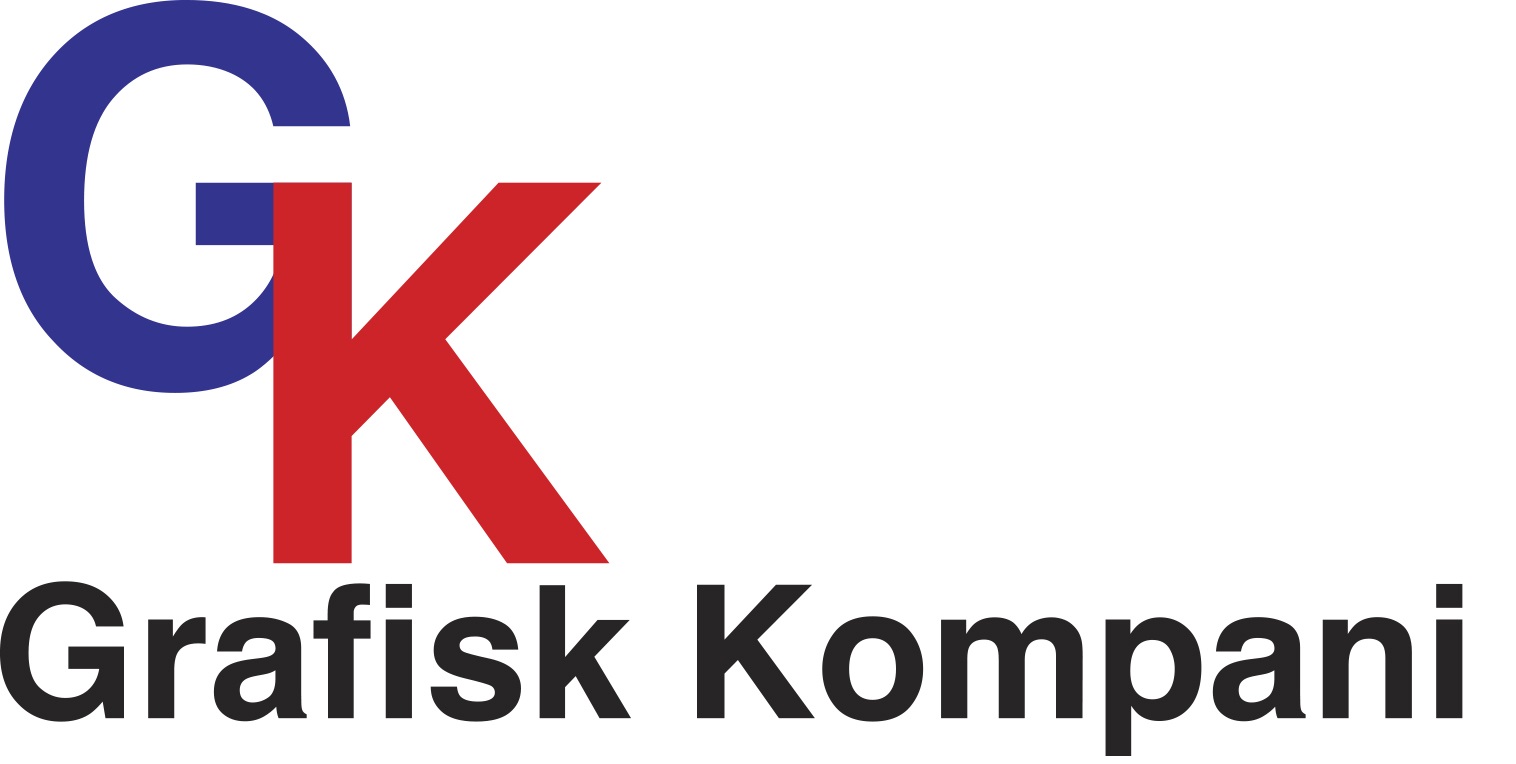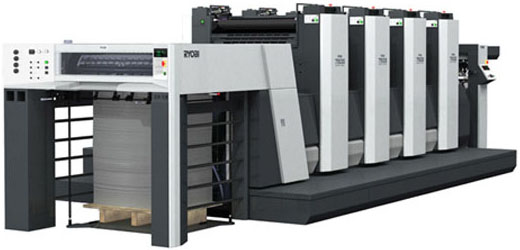
RYOBI MHI B2 750G
This A2-plus size series has inherited the excellent functions and performance of the high-end B2-size RYOBI 750G series. Featuring high productivity, printing performance and reliability, these presses are appropriate for a wide range of printing jobs.
- Specifications
- A wide printing area and high-speed operation expand business opportunities
- Efficient job changeover improves profitability
- Various Innovative Mechanisms Guarantee High-Quality Printing
- An optimized digital workflow gives you total control over production and quality
- Boost Productivity and Add Value
- Ryobi’s Fully Automatic Convertible Perfecting Device Boosts Productivity
- LED-UV Printing System
A wide printing area and high-speed operation expand business opportunities
Wider Paper Size
The RYOBI 750G series comes in two types: the S type press with a maximum printing area of 765 x 545 mm (30.12″ x 21.46″), and the XL type press with a maximum printing area of 765 x 580 mm (30.12″ x 22.83″), enabling a wider range of printing applications. The XL type allows 6-up printing of 8.5″ x 11″ letter-size. The press can flexibly handle a wide range of paper from 0.04 mm (0.0016″) onion skin to 0.8 mm (0.031″)*1 thick cardboard.
*1 Standard: 0.04mm (0.0016″) – 0.6mm (0.024″)
Up to 0.8mm (0.031″) thick cardboard printing model (option): 0.04mm (0.0016″) – 0.8mm (0.031″)Maximum printing area of RYOBI 750G series

When printing 6-up of 8.5″ x 11″ letter-size (XL type)

Cardboard Printing [RYOBI 752G/RYOBI754G/RYOBI 755G/RYOBI 756G] (option)
With the cardboard printing, paper thickness up to 0.8 mm (0.031″) can be handled without adversely affecting the existing printing performance for thin papers. These cardboard printing provide substantial functions to perform high quality printing with easy operation to meet a wider range of printing needs.
- A very simple manual change will switch the thickness range from 0.04-0.6 mm (0.0016″-0.024″) to 0.6-0.8 mm (0.024″-0.031″). However, no gripper height adjustments are required on all grippers at a range of 0.04 mm thin paper to 0.8 mm cardboard printing and the make ready time when changing paper can be greatly reduced.
- Double-diameter impression cylinders and double-diameter transfer drums ensure stable paper transport with minimum flapping, providing stable paper transport even when printing on cardboard.
Reliable Paper Feeding Mechanism
A High Grade type Feeder ensures reliable paper feed even when printing at a high speed of 16,000 S.P.H. The suction tape feeder board simplifies the setting of the brush and runner wheels and shortens the time required for changing paper sizes. The suction tape holds the paper securely and feeds it smoothly to the front lay.

High Grade type Feeder 
Pneumatic pull side guide (Option) Efficient job changeover improves profitability
RYOBI Semiautomatic Plate Changer Semi-RPC
The RYOBI Semi-RPC allows plates to be changed quickly and accurately. The operator merely sets the plate on the positioning pins and presses the button. The Semi-RPC does not need the leading edge or tail edge of the plate to be bent.
RYOBI Fully Automatic Plate Changer Full-RPC (option)
The RYOBI Full-RPC, both plate mounting and plate removal are automatically performed on all printing units in sequence with single button operation, freeing the operator from all plate changing work. The Full-RPC takes only about 4 minutes and 30 seconds to change the plates on an 8-color press, and eliminates human error for greater plate changing accuracy.
Fully Automatic Simultaneous Plate Changer (option)
The «Full-RPC» RYOBI’s conventional fully automatic plate changer ejects the used plates and then inserts the new plates one by one sequentially. Compared to this, the new «Smart-RPC» switches the phase of all plate cylinders to the same position, and then changes the plates simultaneously on all printing units. Thanks to this new system, plate changing can now be performed approx. 2 minutes even though it takes approx. 5 minutes using the conventional Full-RPC for the 928P (convertible 8-color perfector).

Full-RPC (option) Automatic Cleaning Devices
Automatic blanket cleaning device, Automatic impression cylinder cleaning device (option), Automatic Ink roller cleaning device (option)
Paper Size and Impression Pressure Presets (option)
The RYOBI 750G series allows the operator to enter preset values for paper size and thickness using the touch-panel display. Positions of the feeder head and delivery section guides* as well as pull guides* can be preset. Plus, an impression pressure preset system is also available.
*Standard equipment: The pull side guide preset system, Options: Paper size preset, and impression pressure preset systems (The impression pressure preset system includes program-controlled impression cylinder cleaning function.)
RYOBI Program Inking
- RYOBI Program Inking automatically supplies ink to ink rollers to match the image from the early start of printing.
- After the set number of prints are finished, the ink on the rollers is automatically restored to an even state.
Various Innovative Mechanisms Guarantee High-Quality Printing
Double-Diameter Printing Mechanism
The printing unit consists of a double-diameter impression cylinder and a double-diameter transfer drum. These cylinders, which have a large curvature ratio, transport paper with minimum flapping, providing stable paper transport even when printing on heavy stock.

RYOBI-matic Continuous Dampening System
The RYOBI-matic continuous dampening system assures a uniform dampening supply on the plate surface to reproduce sharp halftone dots, glossy solids and finely detailed text. Starting is quick and this system is designed to minimize wasted sheets.
The «RYOBI-matic-D / RYOBI-matic-D Remote Continuous Dampening System (option)
These dampening systems substantially reduce hickeys on plates by adopting a new drive mechanism for the water form roller that creates a rotational speed difference between the water form roller and plate cylinder.
An optimized digital workflow gives you total control over production and quality
RYOBI PCS-G Printing Control System
Almost the entire operation flow from make-ready through printing- including paper changing, cleaning, printing settings, registration, color adjustment, water control, and other operations -can be centrally controlled by the RYOBI PCS-G printing control system.
Image Area Calculating Software [Ink Volume Setter/Ink Volume Setter-CIP4 (PPF)] (option)
RYOBI Ink Volume Setter uses PostScript data created on Macintosh computers to calculate the image area ratio for each ink fountain key on a RYOBI printing press, while RYOBI Ink Volume Setter-CIP4 (PPF) uses CIP3/CIP4 (PPF) files created with CIP3/CIP4 (PPF)-compatible software on a PostScript RIP. The calculated data is loaded via a 3.5-inch floppy disk or through a network into a RYOBI Printing Control System connected to a RYOBI printing press. The system then converts the data into the opening degree of each ink fountain key.
Printing Density Control System RYOBI PDS-E SpectroJet/ RYOBI PDS-E SpectroDrive (option)
The RYOBI PDS-E SpectroJet, PDS-E SpectroDrive Printing Density Control System measures the color bar of the printed sheet using a spectrophotometer Values needed to correct color densities to match those of the OK sheet are calculated and provided as feedback to the RYOBI PCS-G, which appropriate adjustments in the ink fountain keys. Quality control that previously relied on human experience and intuition is now done using precise numerical values, contributing to consistent printing.

RYOBI PDS-E SpectroDrive 
RYOBI PDS-E SpectroJet MIS Connection Software (for CIP4-JDF) (option)
MIS connection software for CIP4-JDF enables real-time exchange using the CIP4-JDF data format for sharing job direction data and production data between the MIS and printing control system. RYOBI MIS connection software and CIP4-JDF-compatible digital workflow streamline printing company operations by improving productivity and integrating the workflow from sales to production and management.
Management System for Printing Presses [RYOBI Print Job Manager] (option)
The RYOBI Print Job Manager connects RYOBI printing presses in a network to perform centralized production schedule management by optimally assigning job data to each press. It also gathers real time information on operating status and automatically generates productivity assessment data for each press. The RYOBI Print Job Manager is a powerful support tool for printing companies who want to boost productivity.
Boost Productivity and Add Value

Various Dryer Units for High Value-Added Printing and reduction of environmental impact
An infrared dryer unit and/or UV curing unit can be installed in the delivery section. An inter-deck UV curing unit can be installed over the storage drum, and a cassette type inter-deck UV curing unit can also be installed over the impression cylinder of each unit. Combining a coating unit and these UV curing units not only provides quick drying for a shorter delivery time, it also makes possible high value-added printing such as printing on film, metallized paper and other non-absorptive media, as well as chemical embossed printing and lenticular printing.

Inter-deck UV curing unit over the convertible perfecting device 
Inter-deck UV curing unit over the impression cylinder 
LED-UV curing unit The 750G series can also be equipped with an energysaving, eco-friendly LED-UV curing unit.
Inline Coating System

Chamber Type Doctor Blade Coating System When the varnish coating system is not being used, the entire coating cylinder and anilox roller can be easily slid upward at the touch of a button to prevent marking on the sheet. Models with coating units offer a choice of the standardly equipped open type doctor blade system or an optional chamber type doctor blade coating system which is featuring automatic setup and cleaning functions.
Ryobi’s Fully Automatic Convertible Perfecting Device Boosts Productivity
Fully Automatic Convertible Perfecting Device
Switching between straight printing and perfecting can be performed remotely from the delivery side via the RYOBI PCS-G Printing Control System. The operator simply inputs the paper size and selects a printing mode from the touch panel display.

One-pass full-color perfecting RYOBI 758GP/7510GP
Unlike a straight printing press, no time is lost waiting for the front side to dry after printing, or for paper piling when printing the back side. Printing time, obviously, is cut in half compared to printing both sides with two passes on a 4-color straight printing press.

